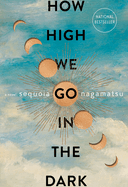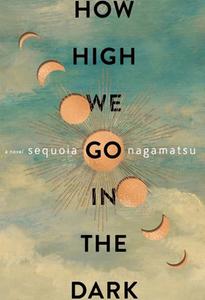
 Sequoia Nagamatsu (Where We Go When All We Were Is Gone) boldly imagines the human cost and cultural revisions brought about by a deadly plague in How High We Go in the Dark, an intimate, inventive sci-fi novel-in-stories.
Sequoia Nagamatsu (Where We Go When All We Were Is Gone) boldly imagines the human cost and cultural revisions brought about by a deadly plague in How High We Go in the Dark, an intimate, inventive sci-fi novel-in-stories.
In the opening story, "30,000 Years Beneath a Eulogy," a grieving father arrives in Siberia to finish environmental research started by his daughter, whose fatal fall into a hidden cavern led her coworkers to discover the 30,000-year-old corpse of a girl whose genes look like a cross between Neanderthal, human and something like a starfish. The body also carries an ancient virus that causes organ failure, and when this "Arctic plague" escapes into the general population, it changes the face of human society. As the timeline marches into a future shaped by the pandemic, Nagamatsu explores this bleak new world through the eyes of loosely connected characters. In "City of Laughter," a failed standup comedian keeps infected children smiling at an amusement park where the final ride is designed to kill them humanely before the virus can. A doctor whose son died of the virus finds himself desperate to protect a childlike pig who was born to provide organ transplants but learns to speak, in "Pig Son." Mourning becomes a central focus of life as the legions of dead leave behind loved ones who "didn't really get to say goodbye. Cryogenic suspension companies proliferated, death hotels, services that preserved and posed your loved ones in fun positions." Even in this future of climate disaster, rampant disease and global mourning, though, hope returns when a scientist makes "a tear in the fabric of space-time" that could give humanity an escape route from the faltering Earth.
This grim vision of the future is sewn together from previously published stories and new ones. Though some scenes feel reminiscent of recent history, Nagamatsu wrote much of the material prior to the Covid-19 pandemic. Characters often are related, but the first-person narrators of each chapter speak with a sense of isolation. This future is a lonely place, where love turns morbid in the face of frequent death, and lost souls struggle to stay whole. These voices in the dark are also a monument to the desire for connection, survival and innovation as "humans [crawl] toward the precipice of possibility." This beautiful collection of sorrows and foretellings should appeal to both literary fiction and sci-fi readers. --Jaclyn Fulwood, blogger at Infinite Reads
Shelf Talker: Nagamatsu's beautiful, melancholy sci-fi novel-in-stories imagines a future in which human lives and cultures are completely changed by a devastating pandemic.

